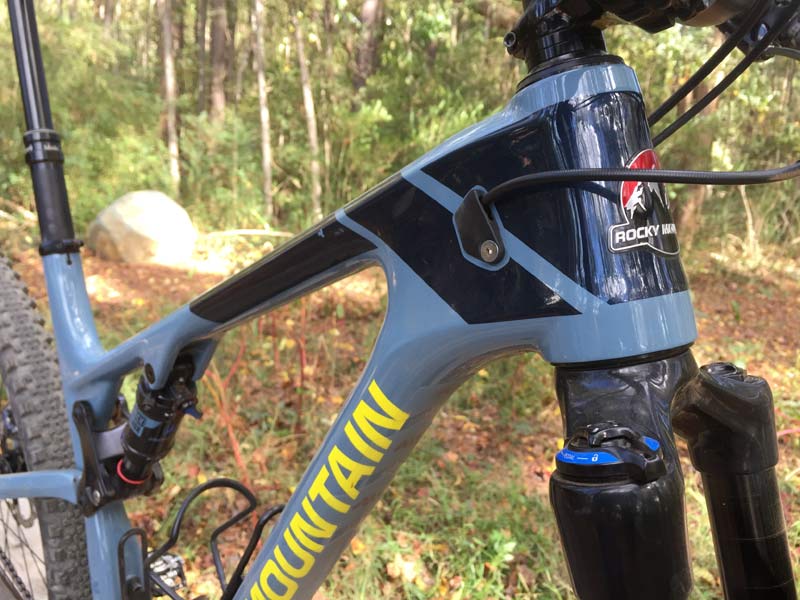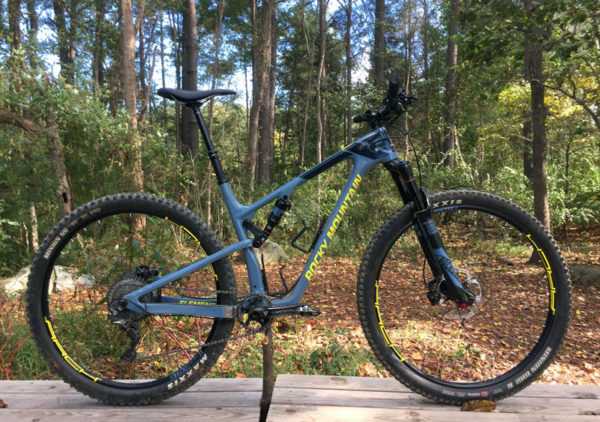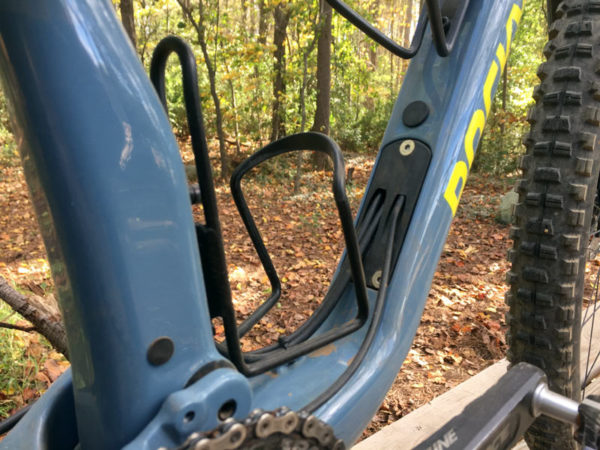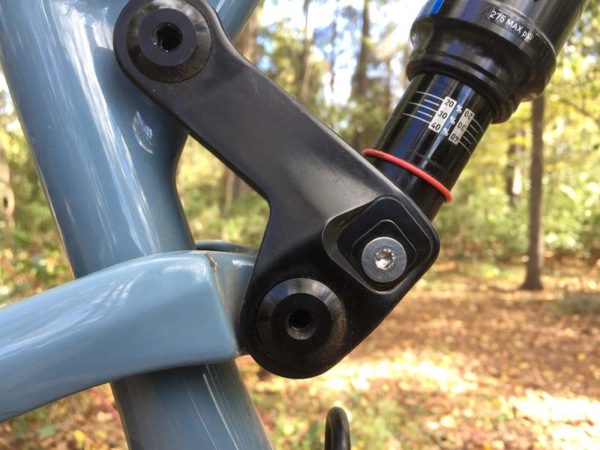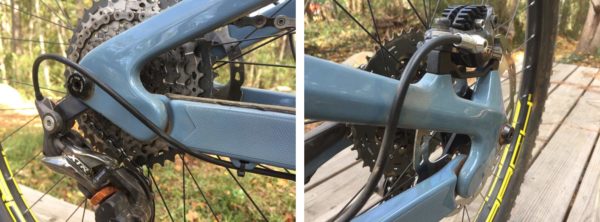A few years ago, I had the Rocky Mountain Element in for long term review and applauded its go-fast manners and ability to handle Pisgah’s rough descents at high speeds. For 2017, the Canadian brand embraced their North Shore roots with updated geometry and linkage and increased travel to make it a little more capable. This latest model now borders on “trail bike” status, gaining 5mm of rear wheel travel and their Ride 9 chip system that allows you to adjust both geometry and suspension performance. So, is this new bike out of its XC element?
Normally I’d ride an XL, but the demo fleet at Cyclofest only had a Large available, so it did feel a bit small. Still, I got a good feel for the 29er and its new, longer 120mm fork, up from 100mm. The rear end jumps slightly, from 95 to 100mm of travel. The idea was to make the bike more capable but keep its race-oriented stature and it seems to have worked. Power transfer was as efficient as before, but the handling was a little less quick than the other XC full suspension bikes I rode. Not slow or bad, just less quick.
Rocky keeps all of the cables and hoses internal, with room for dropper, both derailleurs, rear brake and remote lockouts. Everything spits out of an oversized cover plate near strategically placed wire ports that are likely to work as well with Di2 as with future, possibly suspension related electronic items. The bike is definitely in the 1x category of usage, but there are provisions for sticking a front derailleur on there.
On prior versions, their Ride 9 chip system was placed at the top/front of the rear shock. For this bike, they moved it to the bottom to create a thinner section on the top tube where your knees and thighs are more likely to rub.
The chip itself is slightly smaller, making the adjustments about a millimeter less than what’s on their longer travel bikes. In total, there are nine positions. I rode it in the bottom most position, which puts the bike in the slackest geometry with the most suspension ramp. Check their setup guide (PDF) for details on which position does what. I didn’t change it around for my single ride, so can’t comment on its effect. But, always nice to have options and be able to customize your bike to your body, terrain and riding style. And options you have…the curve itself remains virtually the same regardless of position, but the amount of rise in the rate does change. That means it performs predictably but still lets you set it up for more aggressive terrain and drops or XC rides.
Another important change for 2017 is the movement of the rear pivot. On prior models, it was slightly above the rear axle, and closer to it. Rocky Mountain says moving it lower didn’t affect the kinematics much, but moving it forward slightly gave them the anti-squat and chain growth characteristics they wanted. Namely, increased anti-squat while maintaining a progressive suspension so it would stay firm but feel bottomless. It also reduced the amount of force required to get the suspension moving, so it would feel a bit more supple off the top. They also lowered the shock’s leverage ratio a bit, which put the adjustments available on the shock in a more usable range.
The pivots themselves are single-sided blind pivots, which keeps the wider Boost rear end from having bolts stick out, improving heel clearance. This one’s actually narrower at that point than the non-Boost 2016 model.
With all of these changes, I’d need many, many more rides to dive into the adjustability. But one ride is enough to say it performs well for the segment, giving you a firm pedaling platform to stomp on, but very capable suspension for more aggressive courses. The new geo moves the bike into more “all mountain” and “marathon” segments without watering down the XC performance it’s known for. If you like those generalities but are prone to tinker, this bike’s worth a test ride.
